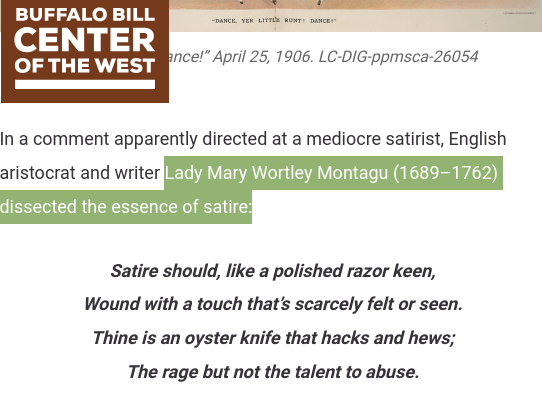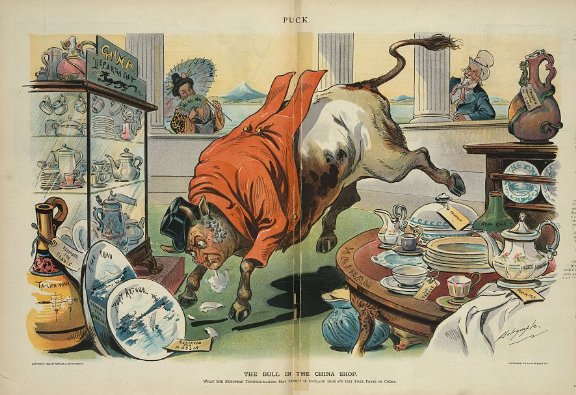200 year conspiracy pt2 is going to explore the esoteric hidden hands influencing the people who read Puck Magazine
Tidbits by Scotty: 200 year Conspiracy pt1: what a wild ride it has been and it doesn't look we the people have learned a damn thing or will we be able to correct our wrongs of the past that are now coming full circle???
Normally blog posts like i'm trying to write just fly off my fingers, sorta like auto typing. This one is causing me a lil difficulty to write I just sent this msg to @GypsyMajik1122 in re to this "hint" provided yesterday I missed https://t.co/pzXbkgPIZx pic.twitter.com/2cjePfraXB
— Scotty (@StLHandyMan) July 27, 2024
Lets start by examining some of the underlying themes of where the name Puck is derived from.
- Puck Magazine The name "Puckish" itself became a byword for mischievousness, harkening back to the Shakespearean character Puck,
- a charming, near-naked boy. It was the perfect name for a magazine that took great delight in poking fun at the powers-that-be.
- no issue was too taboo for 'Puck' to tackle
- Puck's front and back covers featured a colorful, jaunty putto admiring himself in a hand mirror, a symbol that also graced the entrance of the Puck Building in New York's Nolita neighborhood.
- The cover always quoted Puck saying, "What fools these mortals be!", a fitting phrase for a magazine that found humor in the political and social absurdities of its time.
- WikiPedia [white washing with 1/2 truths] has some interesting wordage about the Puck Magazine https://en.wikipedia.org/wiki/Puck_(magazine)
- "Puckish" means "childishly mischievous". This led Shakespeare's Puck character (from A Midsummer Night's Dream) to be recast as a charming near-naked boy and used as the title of the magazine.
- The jaunty symbol of Puck is conceived as a putto in a top hat who admires himself in a hand-mirror
- The cover always quoted Puck saying, "What fools these mortals be!" The jaunty symbol of Puck is conceived as a putto in a top hat who admires himself in a hand-mirror. He appears not only on the magazine covers but over the entrance to the Puck Building in New York's Nolita neighborhood, where the magazine was published, as well.
- a charming, near-naked boy. It was the perfect name for a magazine that took great delight in poking fun at the powers-that-be.
- no issue was too taboo for 'Puck' to tackle
- Puck's front and back covers featured a colorful, jaunty putto admiring himself in a hand mirror, a symbol that also graced the entrance of the Puck Building in New York's Nolita neighborhood.
- The cover always quoted Puck saying, "What fools these mortals be!", a fitting phrase for a magazine that found humor in the political and social absurdities of its time.
- "Puckish" means "childishly mischievous". This led Shakespeare's Puck character (from A Midsummer Night's Dream) to be recast as a charming near-naked boy and used as the title of the magazine.
- The jaunty symbol of Puck is conceived as a putto in a top hat who admires himself in a hand-mirror
- The cover always quoted Puck saying, "What fools these mortals be!" The jaunty symbol of Puck is conceived as a putto in a top hat who admires himself in a hand-mirror. He appears not only on the magazine covers but over the entrance to the Puck Building in New York's Nolita neighborhood, where the magazine was published, as well.
1/2 Truths by Wikipedia- here is where the line is blurred- intentionally or not.
A winged "cherub" I have always associated with Angelic Figures. When its plainly seen that the original Puck symbolism are not angelic at all. A mischievous Puck (Putto) is opposite of what Angels are all about and they are never pictured with wings.
The Story of PUCK book via Amazon WHAT FOOLS THESE MORTALS BE!
1/2 Truths by Wikipedia- here is where the line is blurred- intentionally or not.

- "Richly illustrated, edifying and expertly curated...[a] mesmerizing compendium of full-color political caricature." - The Wall Street Journal
"Many of Puck's issues remain bang up to date, if sometimes mutated." - The Daily Beast
"What Fools These Mortals Be!," is a glorious compilation of some of the magazine's best cartoons of a distinctly (wait for it) puckish nature. IDW Publishing, along with Dean Mullaney's Library of American Comics, have produced yet another brilliant volume that deserves to be lovingly displayed on bookshelves and coffee tables." - The Washington Times
A lavish coffee table book devoted to the most important political satire and cartoon magazine in American history. Published from 1877 to 1918, Puck was regularly a major political battleground and is credited with single-handedly thwarting the third-term ambitions of Ulysses Grant in 1880 and electing Grover Cleveland to the presidency in 1884. Puck did it with art - lavish, color, full-page and two-page centerspread cartoons. It was the first American magazine to publish color lithographs on a weekly basis and, for nearly forty years, was a training ground and showcase for some of the country's most talented cartoonists, led by its co-founder, Joseph Keppler.
This retrospective contains nearly 300 full-color plates. Forward by Bill Watterson of Calvin & Hobbes fame!
“One of the outstanding books of the year” -Print Magazine
"Many of Puck's issues remain bang up to date, if sometimes mutated." - The Daily Beast
"What Fools These Mortals Be!," is a glorious compilation of some of the magazine's best cartoons of a distinctly (wait for it) puckish nature. IDW Publishing, along with Dean Mullaney's Library of American Comics, have produced yet another brilliant volume that deserves to be lovingly displayed on bookshelves and coffee tables." - The Washington Times
A lavish coffee table book devoted to the most important political satire and cartoon magazine in American history. Published from 1877 to 1918, Puck was regularly a major political battleground and is credited with single-handedly thwarting the third-term ambitions of Ulysses Grant in 1880 and electing Grover Cleveland to the presidency in 1884. Puck did it with art - lavish, color, full-page and two-page centerspread cartoons. It was the first American magazine to publish color lithographs on a weekly basis and, for nearly forty years, was a training ground and showcase for some of the country's most talented cartoonists, led by its co-founder, Joseph Keppler.
This retrospective contains nearly 300 full-color plates. Forward by Bill Watterson of Calvin & Hobbes fame!
“One of the outstanding books of the year” -Print Magazine
What's a 200 YEAR CONSPIRACY if we don't tie it into a very old, mysterious, and suspicious St.Louis Missouri event called the St Louis Veiled Prophet Parade?
Here is an interesting connection w/ Puck Magazine and President Grover Cleveland. pic.twitter.com/s54KpV4bb6
— Scotty (@StLHandyMan) July 27, 2024
It just so happened that Grover Cleveland attended the #StLouisVeiledPhrophetParade President and Mrs. Grover Cleveland watch the 1887 VP Parade. https://t.co/xEVKlWPT4E?
— Scotty (@StLHandyMan) July 27, 2024
🧵 Here is s thread on this and it is full of .... https://t.co/fGuRdNmMjz🧵 pic.twitter.com/Noq5okdLNR
very telling imo "in your face" w/ symbolism: wizzards, dragons, spider w/ web, and pic 4: 3rd horse medical symbol follwed by last horseman with battle axe and lance... #StLouisVieledProphet events were attended by people world wide. ps: invitation only. pic.twitter.com/71feTr7Y0j
— systembuster (@stlsystembuster) March 3, 2023
adding onto the #stlouis history research of the #vieledphrophet secret society info thread. https://t.co/leB97liEwC
— systembuster (@stlsystembuster) March 4, 2023
200 Year Conspiracy pt3 will cover the esoteric ties of the StLouis Veiled Prophet Parade
















.jpg)










.jpg)









